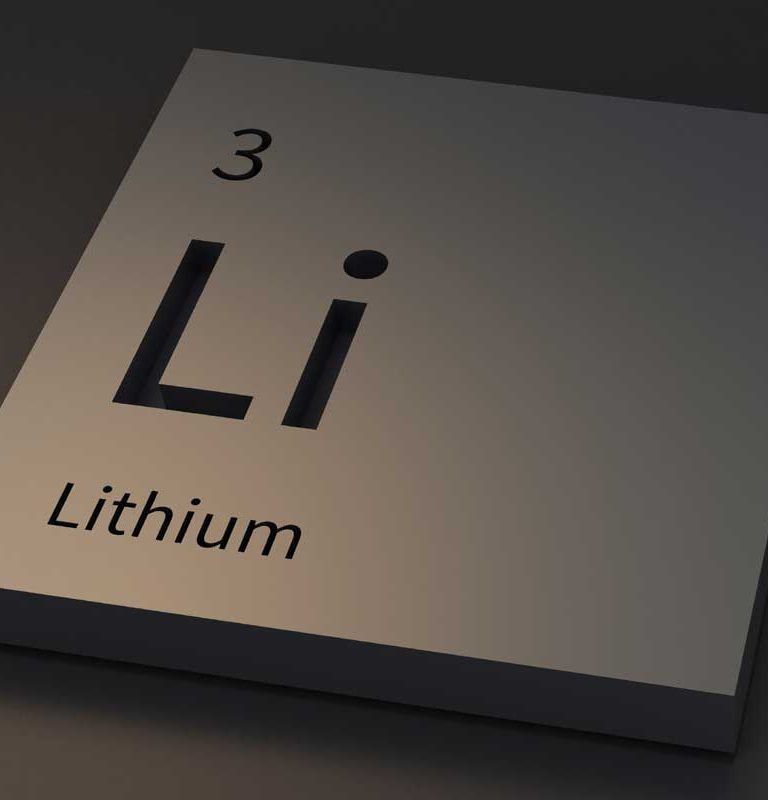We are trading in - Lithium
It is an undisputed fact that climate change and the danger posed by carbon emissions to the environment is the most pressing problem faced by our planet. People and governments have understood that there is little time left to address and reverse this phenomenon. That is why we have seen more legislation restricting carbon emissions, and huge sums spent on research and development by leading companies in the fields of transportation, energy generation, energy conservation and storage, and energy infrastructures to support the shift from ‘dirty’ energy to ‘green’ energy. This trend will undoubtedly intensify.
Key sectors which will certainly blossom are solar and wind parks, and naturally that of transport by electric vehicles as opposed to those utilizing outdated fossil fuels. Tesla was the pioneer in this field, but other U.S., European, Japanese, and Chinese manufacturers are developing electric cars, buses and trucks. What do solar and wind energy producers and electric vehicles have in common? Well, the former require large batteries to store the energy produced for those times when the sun is not shining or the wind not blowing, or even to release the energy in a controlled manner to a power grid, and the latter require rechargeable batteries to generate driving power. And what do all these batteries have in common?


The answer is LITHIUM. Lithium remains the most effective rare earth metal used in the ion exchange necessary for a battery to effectively store and discharge energy. Considering such factors as cost, weight, efficiency, power, times rechargeable etc., it has no competitor. If one considers that electric vehicles can already be seen on our roads, as soon as transport infrastructure such as charging points, battery distributors, recycling plants and emission regulations are in place, these numbers are predicted to increase hundredfold in the next 10 years.
The demand for Lithium will skyrocket, and as this resource is finite, the investment opportunities in its mining, processing, battery manufacture, distribution, electric vehicle manufacture, and associated infrastructures are more than excellent.
Energy Sector
There can be little doubt that one of the greatest global challenges (together with fighting poverty, producing enough food, and managing government debt) will be to alleviate the results of climate change. In this endeavour, nations will necessarily introduce laws and regulations to limit industrial carbon emissions, substitute ‘dirty’ energy production with environmentally friendly methods, and replace ‘dirty’ transport vehicles with ‘clean’ electric ones. At present, the only reason why it is not yet obligatory for all to use electric vehicles, is that infrastructure is lagging behind, and auto manufacturers have not yet the production capacity. This is set to change dramatically within the next 5 years.
All EVs and green energy sources require one common thing – batteries to store and release power in the form of electric energy. What all these batteries require to power everything from our electronics to our cars, and from our homes to our factories, is LITHIUM. There is no substitute for this metal in the production of cost-effective batteries, and we are safe to assume that the demand for this metal will skyrocket.
a) Primary Level
Lithium resources are limited. More than half of the world’s deposits are found in the Lithium Triangle of South America. Other countries with sizeable deposits are China, the U.S, Australia, and Canada. The cost of mining the metal though varies from country to country, and depends mainly on geological factors and labour and production costs. The South American deposits can be exploited with the lowest cost.
We shall examine opportunities to invest in mining companies which have sound financials, good leases on prospected high-yield land, and advantages of supply and transport to markets. We do not exclude the possibility to lease or purchase exploitation rights on lithium bearing tracts.
b) Secondary Level
At the secondary level we find those companies involved in the processing of the mineral and the manufacture of batteries. As the demand will grow exponentially, batteries which have a lifespan of around 4-5 years will have to be produced in great quantities. As charging these batteries with current technology takes some hours, it is not practical to charge other than at home in the evening. Service stations will be established that can exchange an exhausted battery with a charged one for a fee, much on the lines of today’s filling stations. Battery manufacturers shall also have to supply the storage batteries for solar and wind generators, whether they be large or small. In all, a very rosy outlook for manufacturers, and a lot of scope for technological innovation.
c) Tertiary Level
Here we find the industries which require the finished goods (batteries) with their high lithium content (about 40% by weight). These are the manufacturers of EVs, and those of solar plants, wind generators, and electronics such as computers and smartphones. The first is a sector which undoubtedly will blossom. EV manufacturers, apart from Tesla and Nion, who are developing electric cars, trucks and buses are Volkswagen, Toyota, Nissan, FIAT, Daimler, and a host of others. It is certain that all the majors will follow suit. Electric vehicle sales will surely rocket, and the best bets will be on those producing exclusively EVs, as they will have the greatest increase in sales. A manufacturer of traditional cars can only hope that his EV sales will mitigate the decrease in sales of traditional vehicles.
d) Infrastructure
In order to support this transport transformation, the necessary infrastructure must be in place. The main focus by the private sector will be to operate the chains of service and charging stations, and in recycling old batteries. By way of example, a relatively small U.S. company listed on NYSE, has bought and leased land at strategic highway locations for the purpose of operating EV service stations. Their stock has gone from $3 to $45 in just the last 6 months from July 2020.
